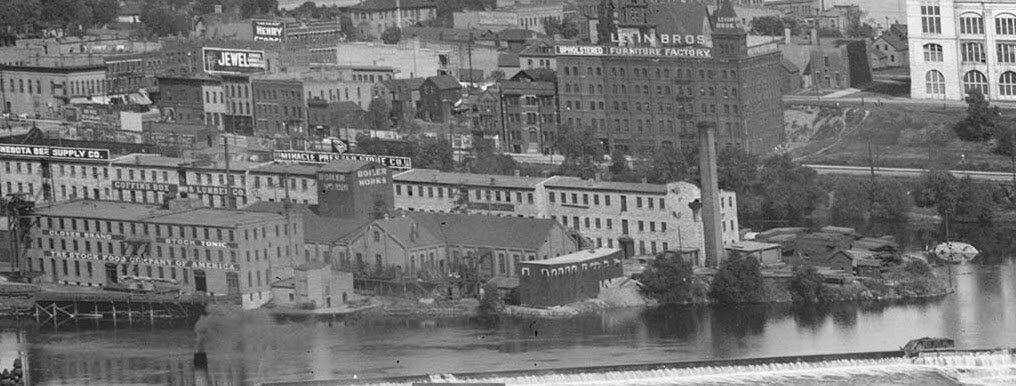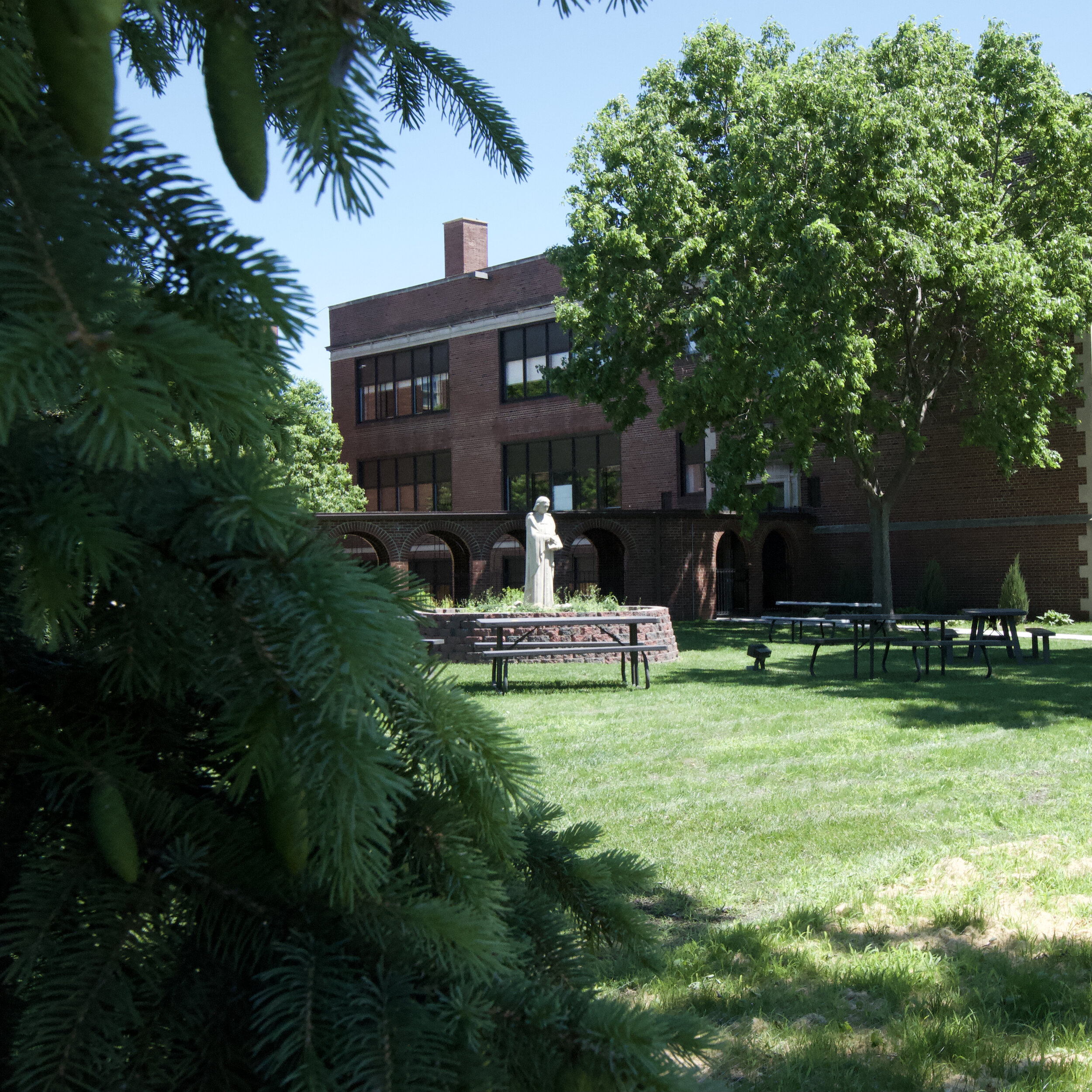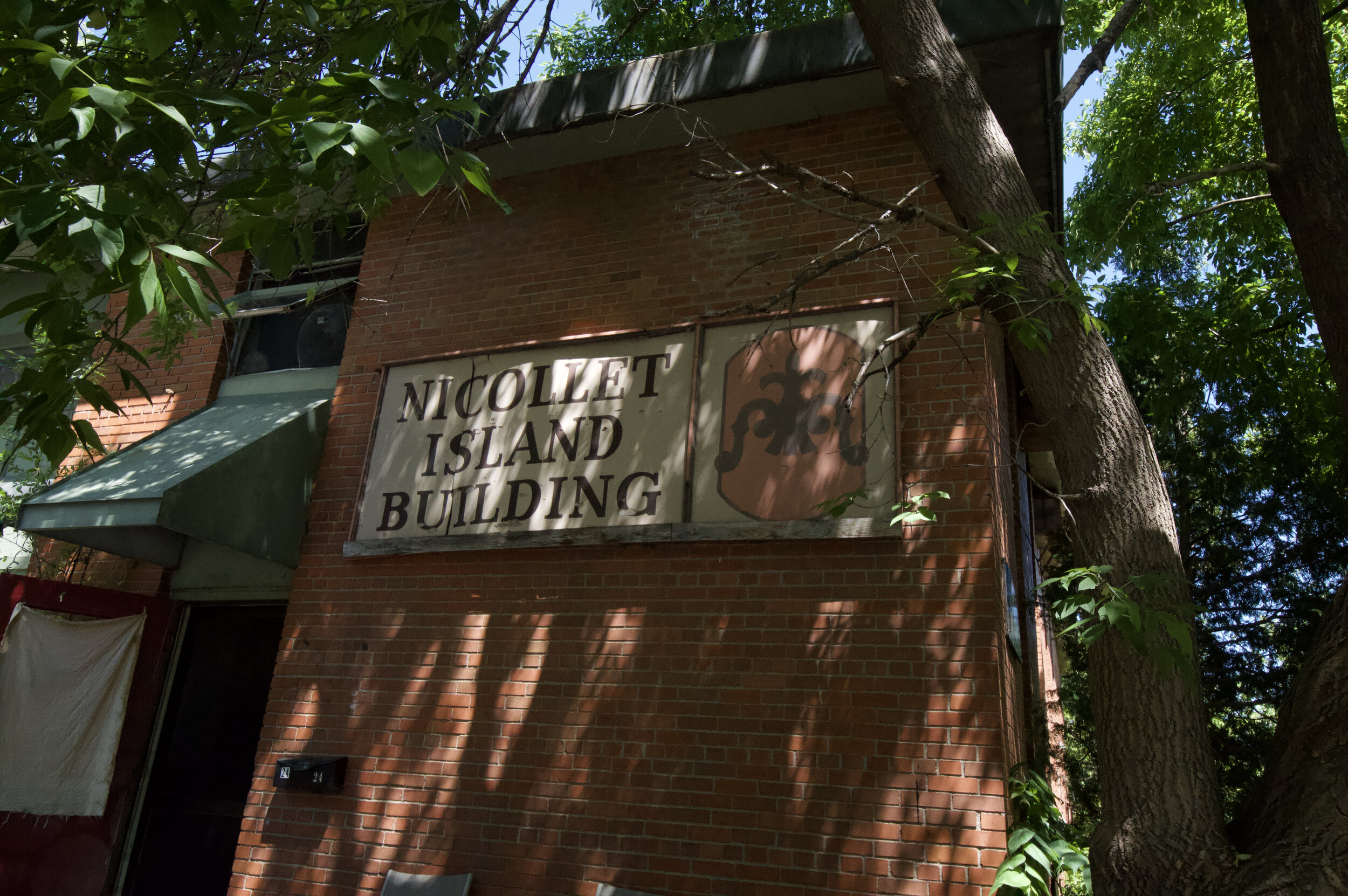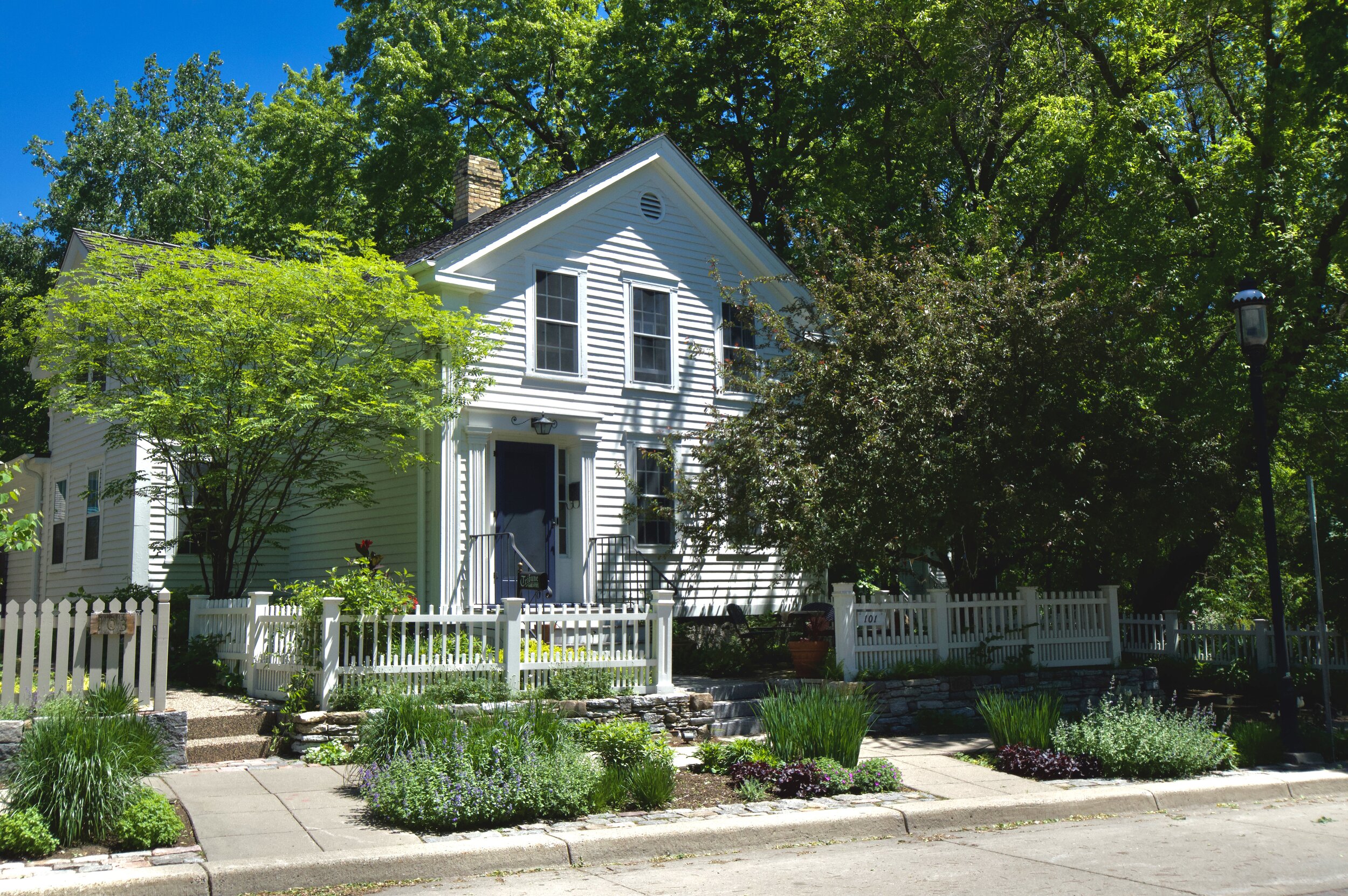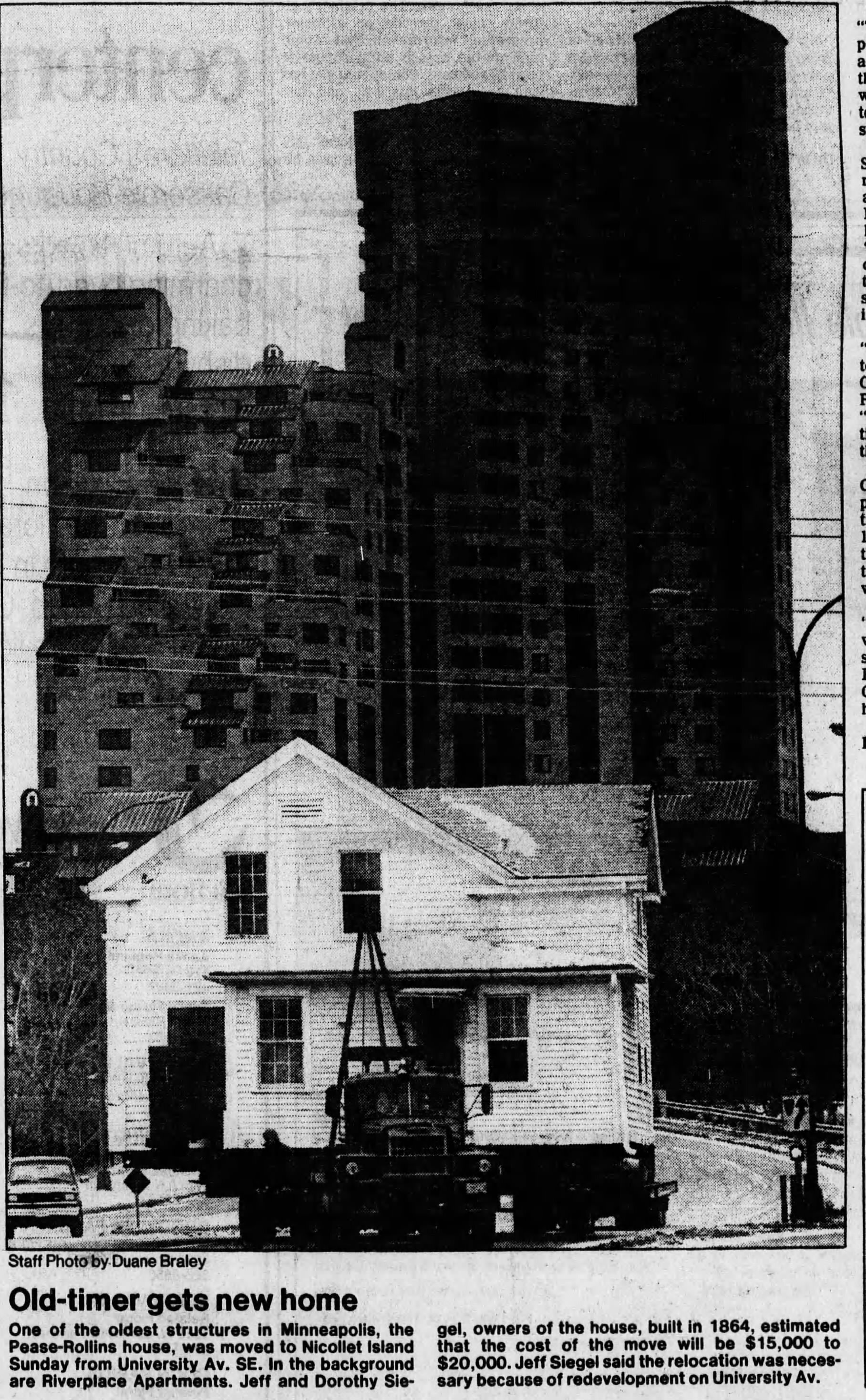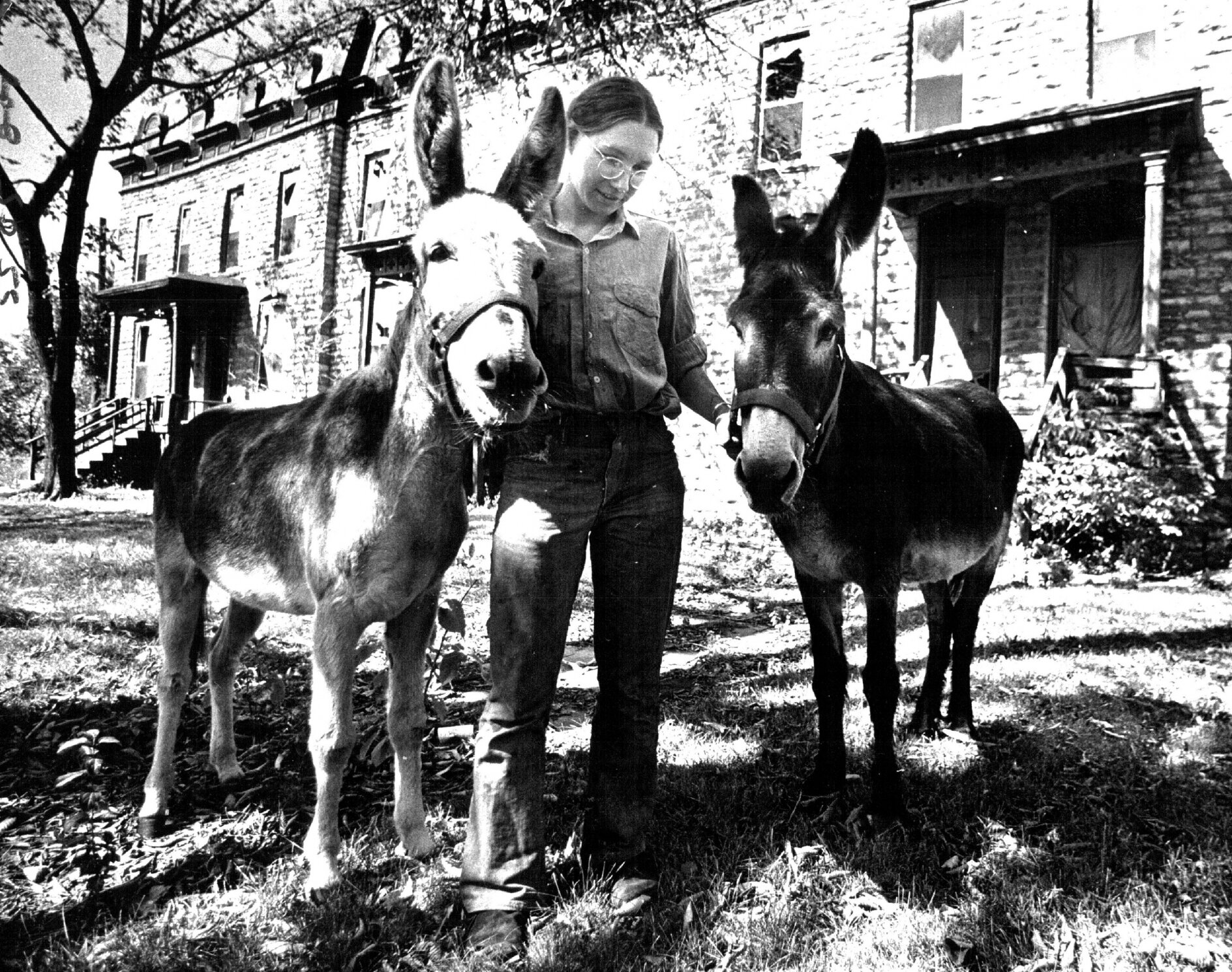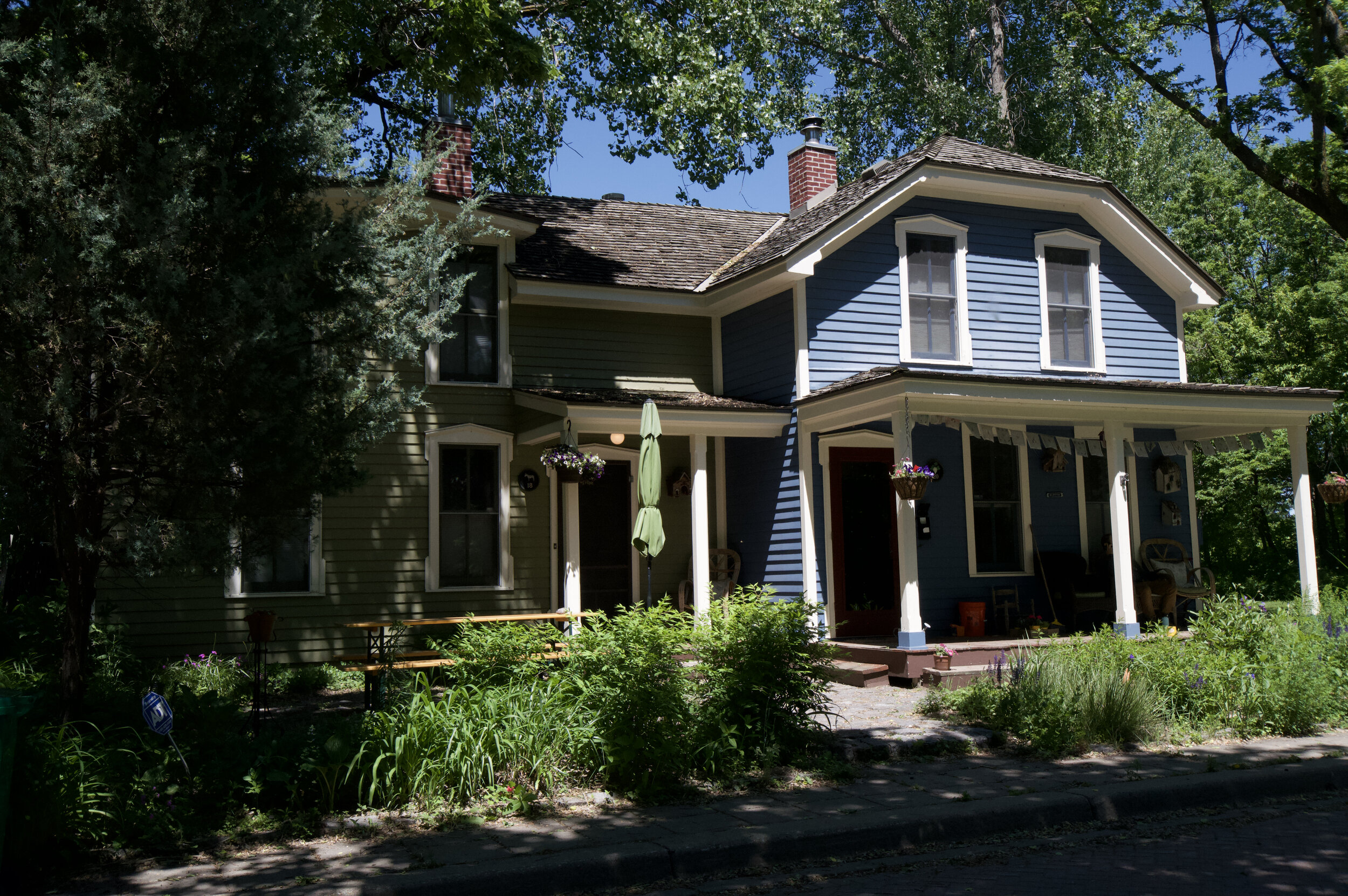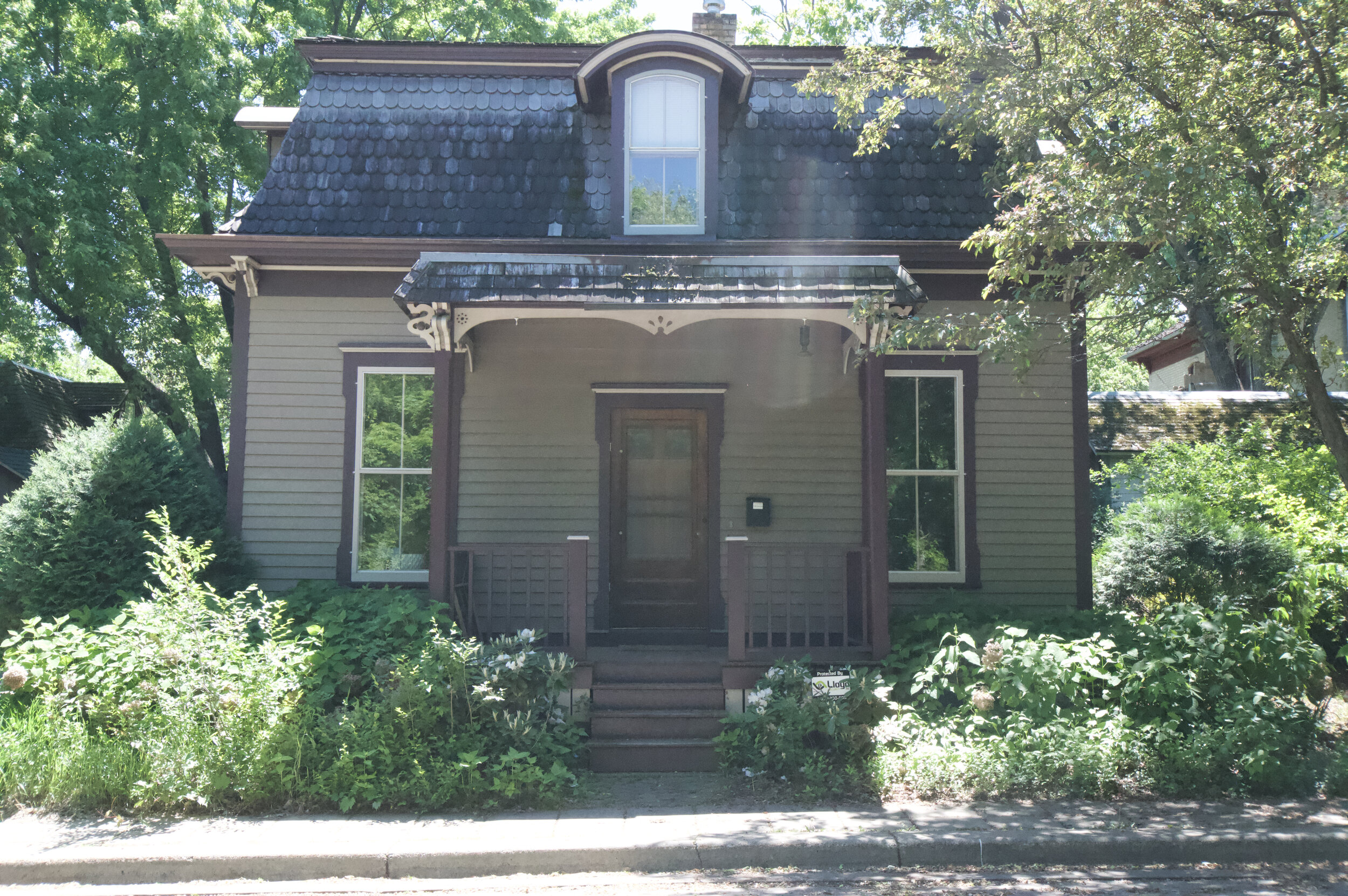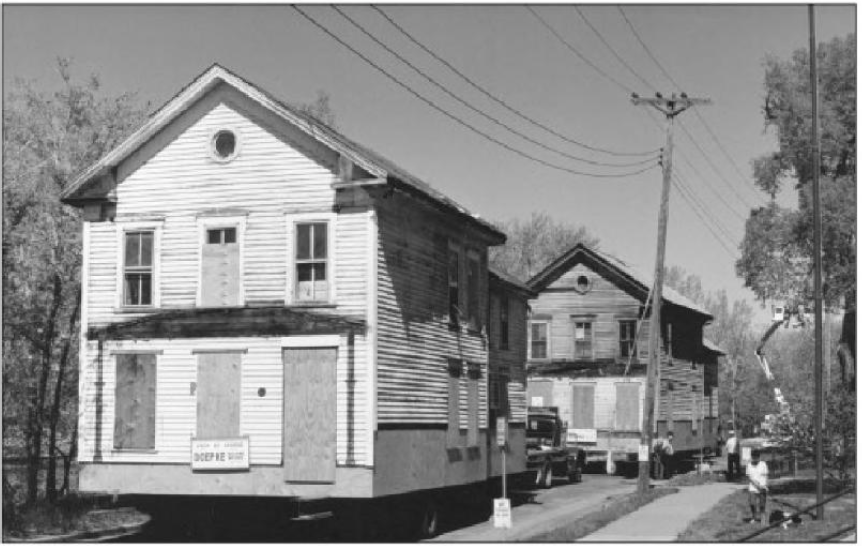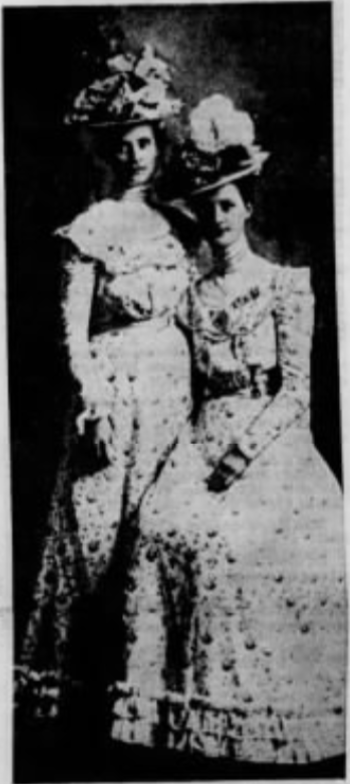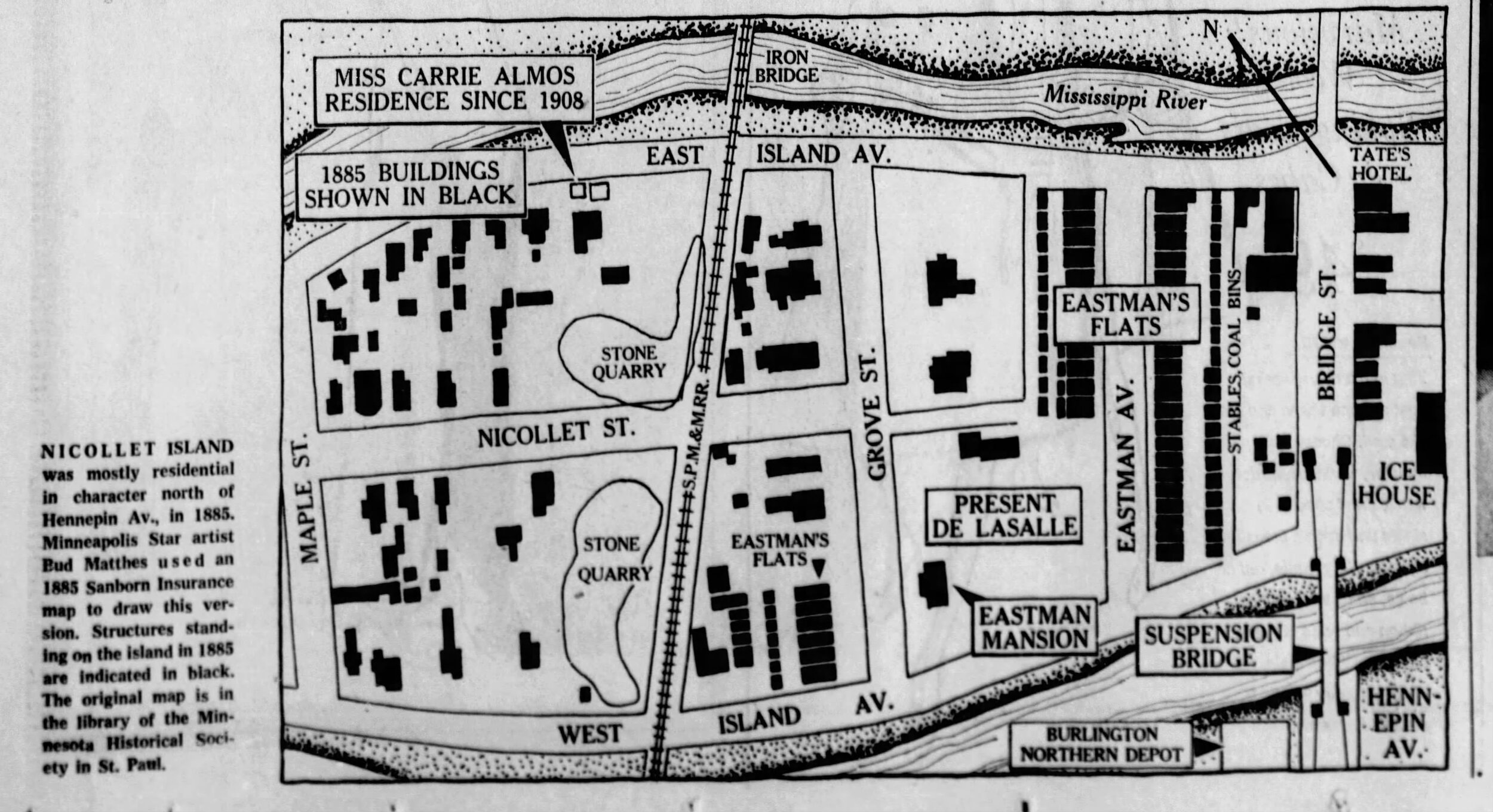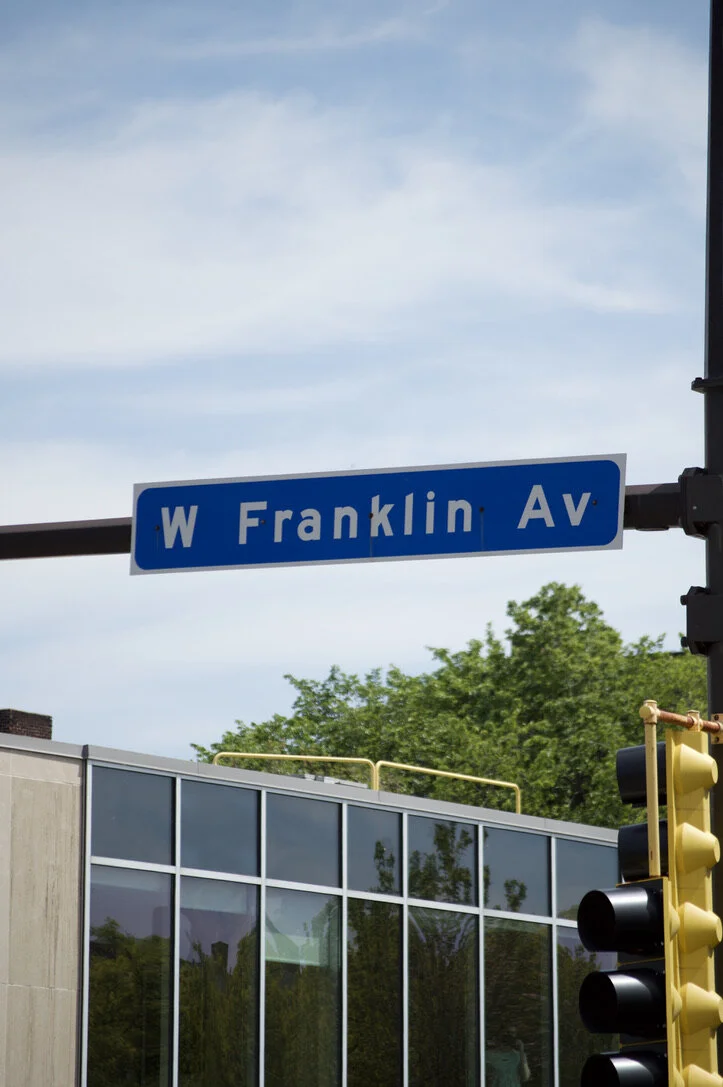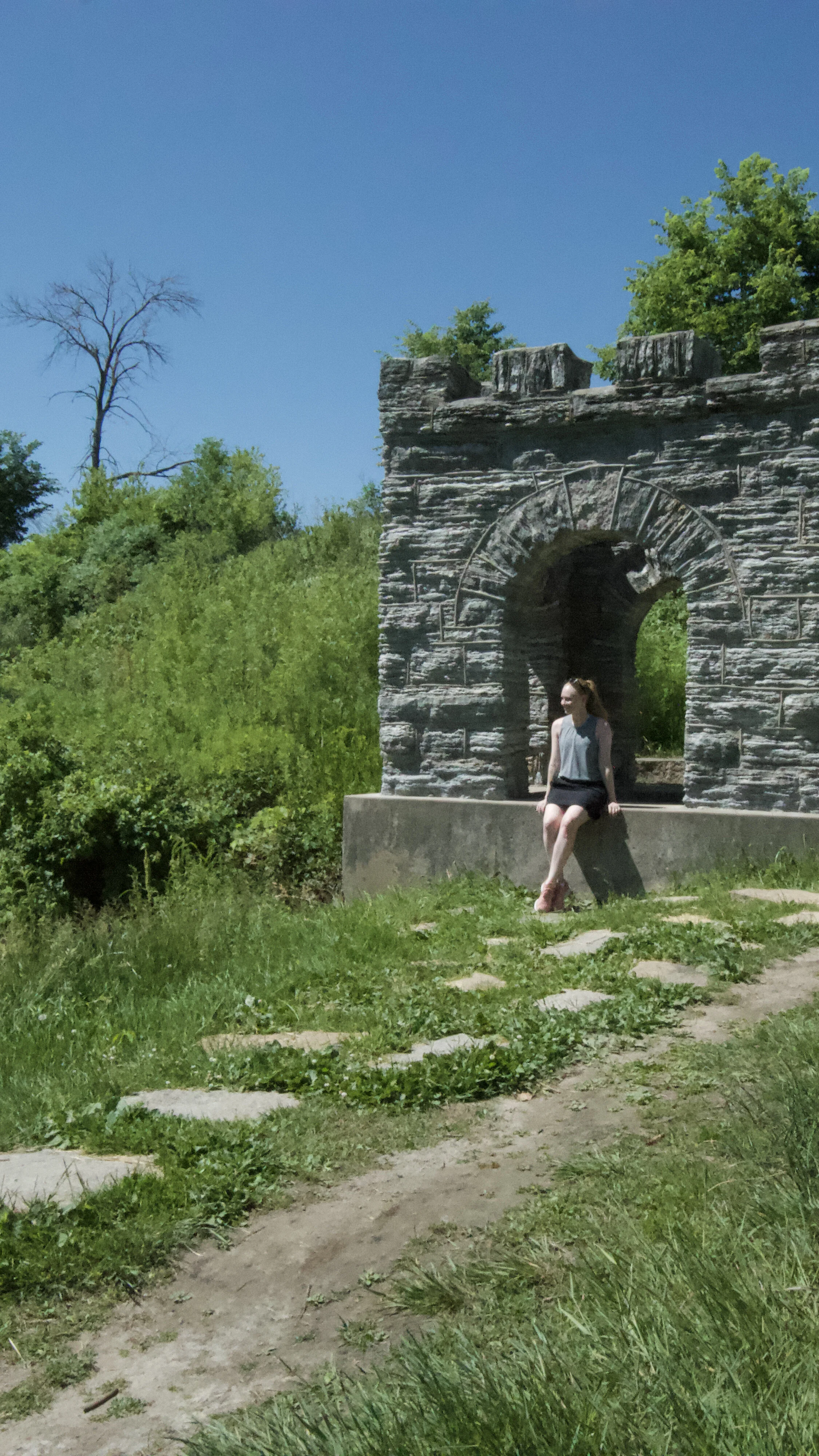15 Places to Explore on Nicollet Island
Nicollet Island is not a big island. Forty-eight acres, or less than one square mile, it’s easy to miss tucked away under the Hennepin Avenue bridge. Unless you are a student at DeLaSalle High School you might not think there’s much reason to visit the tiny patch of land. But actually, Nicollet Island has a collection of landmarks, views, homes and history that can be explored and enjoyed in an afternoon. Let me show you around.
Where to Start
Nicollet Island has plenty of parking - unless there is a wedding happening at the pavilion. There is a paid lot here or you can find a variety of free or metered parking along the streets. We’re going to start at the Pavilion, so try to find a spot nearby.
1. The Nicollet Island Pavilion
The pavilion sits on the southern tip of Nicollet Island and hosts dozens of weddings and events each year. The building itself is one of only two surviving industrial buildings in the island’s history. Originally the William Bros. Boiler Works, built in 1893, it is now owned by the city. The building has some signature architecture that makes it easy to spot in historical photos. See if you can find it in photo below.
Changing Views of the Falls
If there isn’t a wedding or event happening at the pavilion, you can walk around the back of the building to the deck with views overlooking the Mississippi River. The skyline views are stunning, but there is something else to look out for: Saint Anthony Falls. Underneath the Third Avenue bridge, you can see the horseshoe shaped dam that directs water flow over the falls.
Today, the falls look neat, organized, even symmetrical. When the Father Hennepin got his first glimpse of the falls in 1680 he would have taken in a very different site. In fact, he wouldn’t have even been able to see them from this spot because they were nearly 1500 feet further downstream. Decades and decades of natural erosion, sped up in more recent years by human folly, has moved the falls slowly up the river to where they are today. The work of the Army Corps of Engineers to build a concrete apron over the falls and control the water traffic has stabilized the falls so we can enjoy them for many years to come.
The map at left shows how the location of the falls has moved upstream little by little through the years.
2. The Nicollet Island Inn
A short walk from the pavilion is the Nicollet Island Inn. Also built in 1893, the Isle Sash and Door company is a lucky survivor. Shortly after it opened an enormous fire leveled all of the surrounding wood frame businesses. Isle Sash and Door was able to quickly reopen. By 1913, the building was a Salvation Army Men’s shelter helping the displaced and unemployed in need. In 1982, a multi-million dollar renovation converted the building into an inn and restaurant. Before renovations began, the building was in pretty rough shape. Can you find which side of the Inn is featured in this photo?
3. The Bell of Two Friends
During the annual Aquatennial celebrations in the Twin Cities all of our attention is focused on events celebrating the lakes and rivers that make living in Minnesota so special. Another celebration happens each year on the island celebrating a special relationship. Minneapolis has a sister city in Japan, Ibaraki, which is a suburb of Osaka. The relationship was formed in 1980 and has grown throughout the years. In 2001, Ibaraki gifted the Bell of Two Friends to the city to celebrate their 20 years of friendship.
The bell, which is on a path between the pavilion and the inn, replicates a 2,000 year old Dotaku bell. In the center of the sculpture is a five-foot-high archway where a cord attached to a bell hangs. The cord is pulled and the bell is rung by people as they pass through the arch. It is said, every time the bell is rung two prayers are sent — one for the friendship of the peoples of Minneapolis and Ibaraki and one for world peace. Take a moment to walk through the sculpture, ring the bell, and think happy thoughts.
*If you are up for the walk, head down West Island Avenue and under the bridge. At this point you might want to move your car and park it on the street near DeLaSalle High School. The best spots are along Grove Street by the old part of the school.
4. DeLaSalle High School
The Catholic school, led by the De La Salle brothers, first opened on the island in 1900. It was originally a “commercial” or technical school. When it first opened, they built a small school building - which burned down down in 1971. They also bought and occupied the mansion built by “Father of the Park System” Charles Loring (later owned by Col. William King). The mansion was torn down when a school addition was built in 1920. Another addition was built in 1960. And a final addition/remodel was completed in 2016.
Today, a Founders Park commemorates the location of the original building. Can you find the statue of Saint John the Baptist in the park?
5. The Eastman Flats
Across Grove Street from DeLaSalle is a row of townhomes. Now called the Grove Street Flats, they were originally named after their developer, Charles W. Eastman. Eastman bought Nicollet Island with his business partner John Merriam in 1869 to continue expanding their mills at the falls. Eastman also sought to entice wealthy business owners to live on the island. He built dozens of row houses outfitted with varying stone facade, fireplaces, and private stables. As business declined during the Depression, and as the wealthy moved out to the suburbs, the townhouses fell into disrepair and were divided into smaller units.
As DeLaSalle expanded, more and more of the row houses were demolished. By the 1970s, only these final townhomes were still standing. Luckily, they were saved from the wrecking ball.
6. Truckstop Gallery
There are old buildings on the island and there are new buildings on the island. There are very few “in between” buildings. One outstanding example is the Nicollet Island Building which is next door to the Eastman Flats on Grove Street. This long flat building was originally a maintenance facility for municipal trucks in the 60s and 70s. Today, it has been divided into condos and also houses the Truckstop Gallery. You can see evidence of the building’s former life in the gas pump overhang that still juts out at the back of the building. You can also see evidence of the current inhabitants’ creativity surrounding the building today. See what interesting shapes you can spot in the sculptures around the building (but be respectful, people live here).
7. The Island Campus of the University of Minnesota
This next spot is a little harder to find. Crossing the island from east to west is a meandering path through the woods. Hidden in among the trees is a boulder with a plaque.
Nicollet Island and the University of Minnesota have had a close relationship from the start. The first owner of the land that makes up the island, Franklin Steele, donated several acres of the island for use by the new school. He was also elected to the Board of Regents.
* However you wander through the wooded park, make your way back to West Island Avenue and head north.
8. The Oldest House NOT built on the Island
At 101 West Island Avenue you will find the R. M. S. Pease House. Built 1864, this house was originally located at 814 University Avenue Southeast. After the Park System bought the island, this house was moved here in 1986. In 1863, R. M. S. Pease served as a minister to the First Baptist Church of Saint Anthony (now known as University Baptist Church) but later worked as a toll collector for the Hennepin Avenue bridge.
9. Island Monopoly
At the corner of West Island Avenue and Maple Place you will find 107-109 West Island Avenue. This yellow and white duplex was built for Franklin Griswold. It wasn’t his first home on the island and it wouldn’t be his last. Griswold came to Minnesota as a young man, just after graduating from Yale Law School. He fought in the Dakota War of 1862 and also served in the Civil War. Afterwards, Franklin and his wife, Ella, began buying, building, moving, combining, renovating, and renting homes on Nicollet Island. It is unclear how many homes the Griswolds came to own, but 9 are still standing on the island. Griswold didn’t just accumulate a large number of houses, he also had 15 children.
10. Animal Farm
At 15-17 Maple Place is an adorable duplex in the Queen Anne style with an elaborately trimmed porch. One of the first homes built by Franklin Griswold, the duplex eventually became the home of one of the most iconic characters in Nicollet Island history. Not a business owner, not a landowner, but in fact, a donkey owner.
In the 1970s, as the city was in full urban renewal mode and prepared to demolish all the buildings on Nicollet Island a stalwart group of residents banded together to fight back and save the community that they loved. One of the leaders was a woman named Doris Parks who lived on the island with her brother and her donkey named Sheba. She had a wild menagerie of animals: turtles, starlings, and chickens. She also had geese at one time, but rumor has it she was forced to give them up after one of them bit the visiting local celebrity Garrison Keillor.
Thanks to the activism of the residents of the island, the Victorian homes were saved and a historic district was formed. In 1983, the Park Board and the Minneapolis Community Development Agency (MCDA) negotiated a deal between park lovers, history buffs, island residents and DeLaSalle High School. Some residents were given a 99-year lease to rehab historic homes that were located on parkland. That’s right, none of the homeowners on Nicollet Island OWN the land their houses sit on.
11. Two Houses in One
Across the street at 18-20 Maple Place you will see one example of Franklin Griswold’s Willy Wonka approach to architecture. This L-shaped duplex is painted two different colors to commemorate the fact that it was originally two different houses.
12. Tiny House Living
Continue along Maple Place, but not too fast or you might miss our next stop. The tiny house at 27 Maple Place is the smallest house on the island and another piece in Franklin Griswolds collection. The fancy Second Empire Mansard roof disguises that the house is actually two-storied. The 1895 state census lists eight people living in the house, while the 1900 census suggests two different families occupied the house.
13. The New Kid on the Block
Continue on Maple Place and turn right onto Nicollet Street. The house at 97 Nicollet Street, you will be surprised to find, is the newest house on the island. Peter Conway, an Irish immigrant who worked as a laborer, built a modest, one-and-one-half story house on this lot in about 1871. Conway died in 1885, but his widow Ann Conway lived in the house until her death in 1920. A fire in 1972 gutted the house, and it was later demolished. A new infill house, which is similar in scale and feel to the original, was built on the site in 1996.
14. Together Forever
Make your way back to Maple Place and turn right. The homes along this block were owned by Franklin Griswold. Take a right turn onto East Island Avenue. At 171 and 175 East Island Avenue you will find two houses that have stood side by side both on AND off the island. Brothers Andrew and Ole Loberg built twin homes at 1812 and 1814 Cedar Avenue South. Andrew was a foreman at a sawmill and Ole worked as a carpenter. Both homes were scheduled for demolition before they were bought and moved, side by side the whole way, to the island in 1990.
15. Hidden History
The oldest homes on the island are hidden from the prying eyes of looks-loos like you and me. Like Franklin Griswold was fond to do, the homes, duplexes, and four-flex that make up 181 through 190 East Island Avenue have been moved around and combined.
The oldest original home on the island, 185-186 East Island Avenue, is actually two houses that were moved together to form one T-shaped structure. Both houses originally stood on at the front of the lot facing East Island Avenue and were moved to the back of the lot in about 1898 to make way for the Woodward Flats. The oldest section was built in 1866 by John Meyers. The other section of the house was built by Henry O’Brien around 1870. They’re location along a private alley and hidden among the trees makes it difficult (and socially awkward) to see.
However, the duplex at 183 East Island Avenue was once home to resident with perhaps the longest tenure on the island. Carrie Almos moved to the island with her family in 1908. Miss Almos came to America from Norway in 1880. She remembered seeing the Eastman family coming and going. She had a friend who lived in one of the Eastman flats when they were still a fashionable place to live. Before she died in 1972, she was featured in the Star Tribune and interviewed by columnist Barbara Flanagan. She had lived on the island for 78 years.
Continue along East Island Avenue. If you parked on Grove Street, take a right at the football field and follow the path to the bleachers. and then to Grove Street. If you parked by the Inn and Pavilion, just continue along East Island Avenue all the way back to the lot.
I hope you have enjoyed this tour of Nicollet Island, either in person or from the comfort of your home. As thorough as this tour may seem, there are still many, many stories about Nicollet Island still to be told!
I would love to know if you visit the island, follow my tour or explore on your own. Send me any questions or any discoveries of Nicollet Island you may come across.


